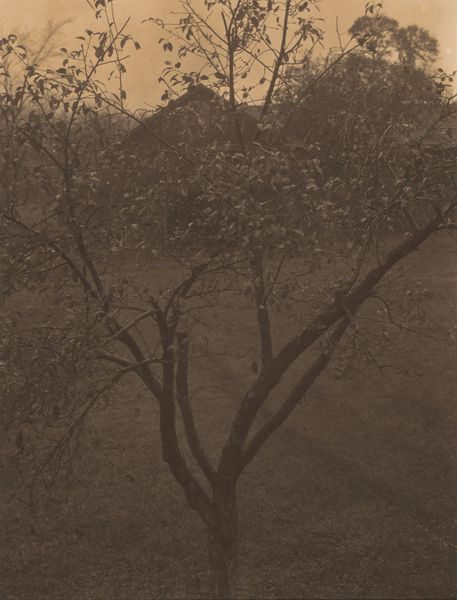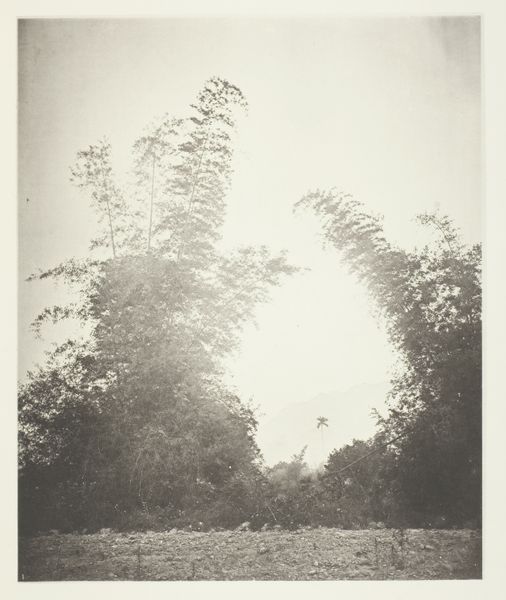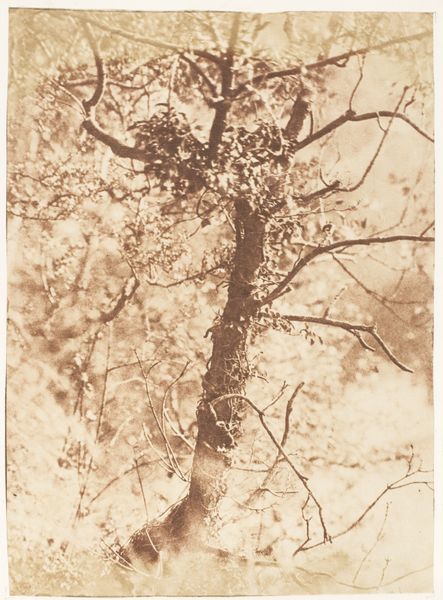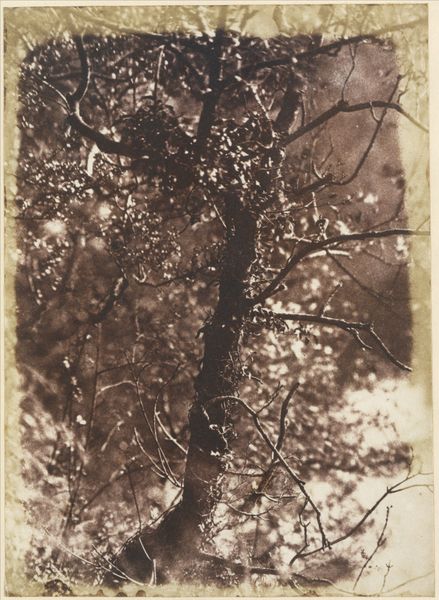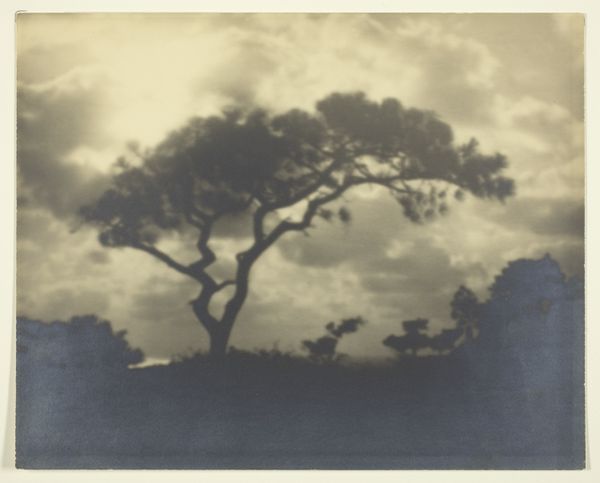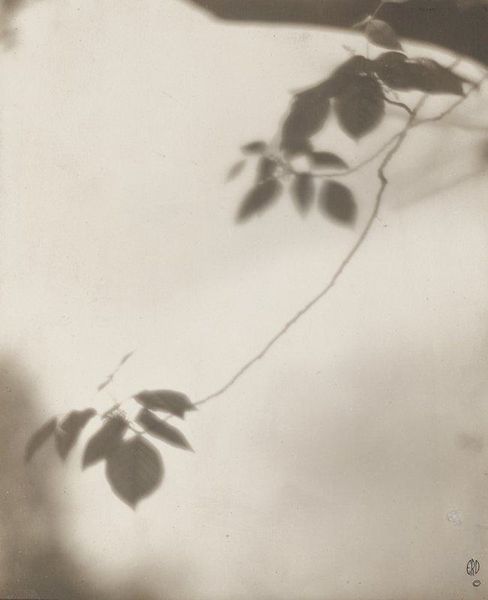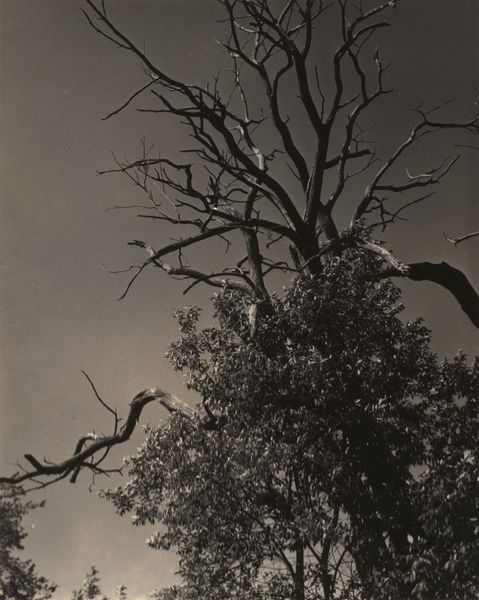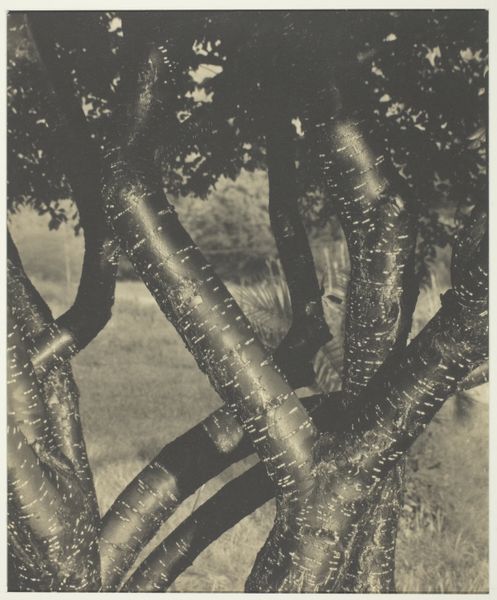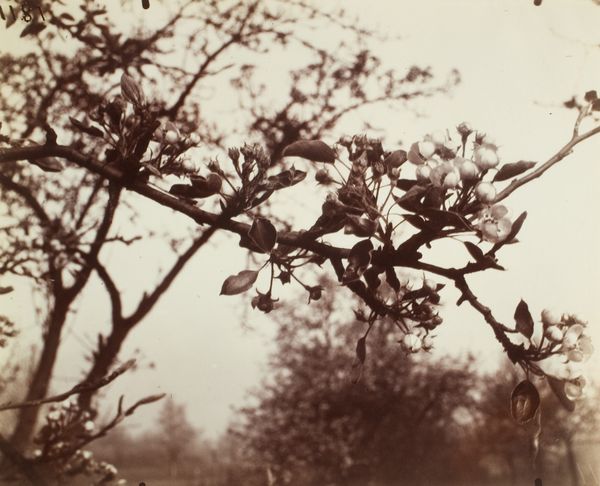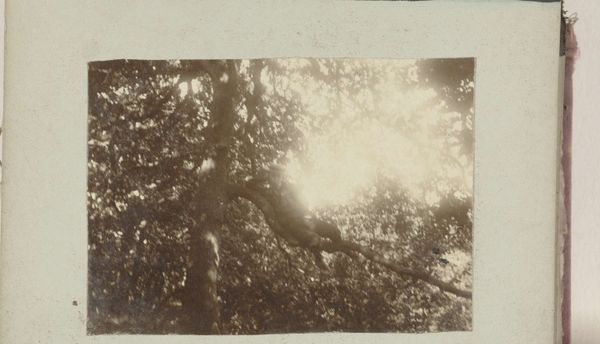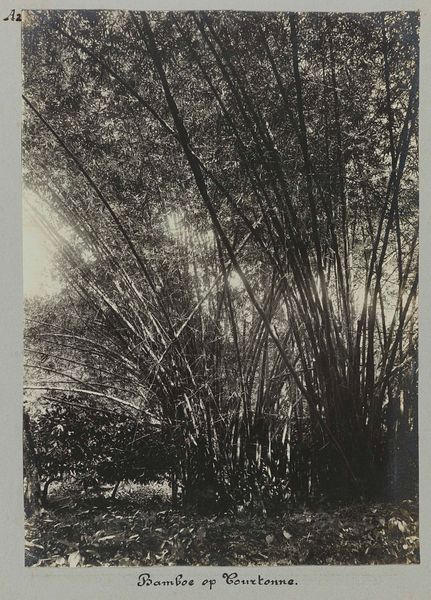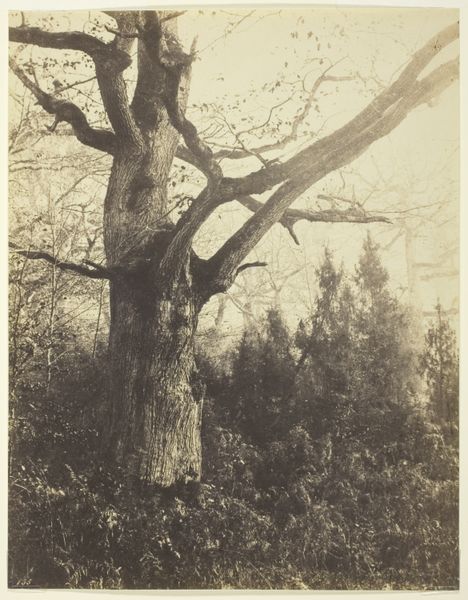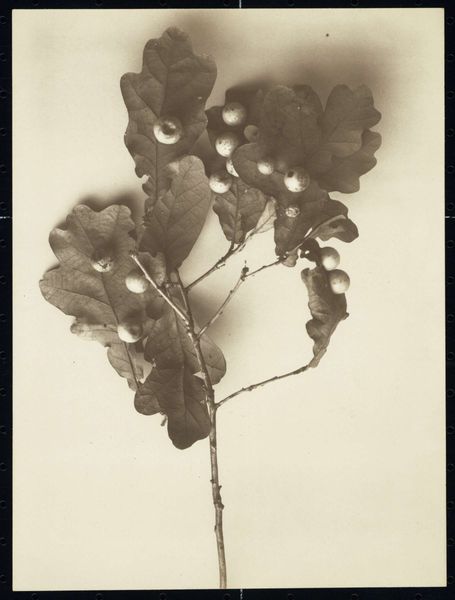
Dimensions: sheet: 22.1 x 17.8 cm (8 11/16 x 7 in.)
Copyright: National Gallery of Art: CC0 1.0
Curator: Let’s explore Eugène Atget’s “Branche de pommier,” taken sometime between 1922 and 1923. What are your initial thoughts? Editor: Stark. It’s all contrasts – the sky bleeding into the top branches, that deep, murky ground. Makes you wonder what the political climate of France was like during that period. The overall tone is subdued but hints at social and agricultural transformation. Curator: Interesting point! Atget was meticulously documenting the changing face of Paris, its architecture and surroundings. Notice how he focuses here on an apple tree branch. He was, above all, fascinated by craftsmanship, documenting labor. He likely printed this photograph himself, carefully controlling the final print through chemistry and light exposure. Editor: Exactly! Looking closer, I'm wondering about Atget's possible connection to feminist and/or political activist groups of the period, focusing as he does on gendered issues and rural realities. What are the narratives that place Atget in relation to, say, debates around French agricultural policies and identity in the early twentieth century? Curator: That brings a layer of depth to the analysis, certainly. But let’s also consider the pure craft. This isn't just about snapping a picture. It’s about carefully choosing an angle, understanding light, using a large-format camera that would demand precision. It highlights a different type of labor—artistic production as skilled work. The tonality he creates through darkroom practices is stunning and shows expertise in print-making. Editor: Right, I see that craftsmanship but I read those material conditions through Atget’s specific place and moment in history. The way he frames nature feels imbued with both its physical reality, while reflecting broader historical currents impacting agrarian life. In my reading, the apples symbolize potential, abundance – or maybe lost agrarian heritage as France became increasingly urban. Curator: The image is undeniably haunting, no matter the interpretation. Considering the context, materials, and processes invites diverse narratives that bridge history and personal reflection. Editor: Indeed. We have seen how this seemingly simple image connects both artistic production with complex sociopolitical ideas through gender, historical period, identity and philosophical issues.
Comments
No comments
Be the first to comment and join the conversation on the ultimate creative platform.
